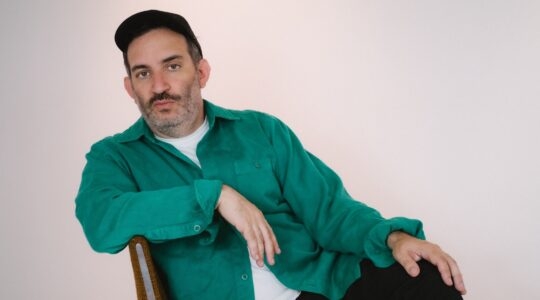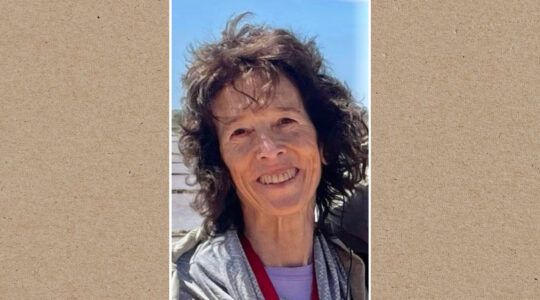Rabbi Andrew Davids, executive director of the Association of Reform Zionists of America, makes no secret of the challenges his group faces as it tries to increase aliyah, or immigration to Israel, within the Reform movement.
Although aliyah from North America has increased steadily in recent years, standing at 3,200 last year, its highest since 1983, 60 percent of those new olim are Orthodox Jews and close to 20 percent are affiliated with the Conservative movement, said Boaz Herman, head of the Jewish Agency’s Aliyah Department in North America. Reform Jews account for only 5 percent of that figure.
Until about five years ago, the Reform movement went through close to a decade without any full-time Israeli shaliach, or emissary, assigned to its ranks, Rabbi Davids said, adding that “too few Reform Jews” see Israel “as an important part of their Jewish makeup.” Several reasons exist for that state of affairs, he added, but the situation hasn’t been helped by the status of Reform Judaism in Israel, where official recognition is held only by the Orthodox movement.
All of which makes the initiative launched this week by the Reform movement and the mayor of Modiin, a new, but growing city between Tel Aviv and Jerusalem, significant and even historic in the eyes of Reform leaders and aliyah officials.
Mayor Moshe Spector and Rabbi Kinneret Shiryon, both of Modiin, are visiting six cities to convince 10 Reform Jewish families to make aliyah to the city, which numbers about 60,000 people.
Under the initiative, whose other partners include the Jewish Agency and Israel’s Ministry of Absorption, those families who move to Modiin would receive a package of incentives, including rent subsidies and, if needed, job training, above and beyond the traditional assistance given to new olim. The initiative is targeted at young families with children, said Rabbi Davids, who estimated that the additional aid would amount to somewhat more than $5,000 for each family.
The new olim would also receive the personal support of municipal employees and members of Modiin’s Reform community, who would guide them as they make their first contact with the Israeli bureaucracy, registering their children for school, applying for driver’s licenses and applying for benefits.
Spector, a three-term mayor from a seventh-generation Israeli family, and Rabbi Shiryon, an American-born olah who moved to Israel in 1983 and raised four children there, began their tour Monday with a talk to senior leaders of the Union for Reform Judaism, the movement’s New York-based congregational arm. Rabbi Eric Yoffie, president of URJ, gave brief remarks at the meeting, which also featured Rabbi Davids, whose group, ARZA, is an affiliate of URJ.
The mayor and Rabbi Shiryon also appeared Monday evening at Temple Shaaray Tefila, a synagogue on the Upper East Side, one of four congregations they were planning to visit in the New York area. The five other cities on their schedule are Washington, Baltimore, Chicago, Milwaukee and Poughkeepsie, N.Y.
At each of their talks Monday, both speakers discussed their backgrounds and the history of Modiin, which ARZA considers “fertile ground” for building Israel’s still-nascent Reform movement, Rabbi Davids said.
“Israel is known for its polarization in terms of the religious streams of Judaism,” Rabbi Shiryon told Reform leaders at URJ, a comment she later repeated at Shaaray Tefila. But Modiin, she said, is pluralistic, and the municipality is helping her community, the Yozma Reform Congregation, build a permanent home. She contrasted that to how the different streams of Judaism are treated on a national level, where the only stream that receives government funding for its activities is the Orthodox movement. “Modiin is showing us a different kind of model,” she said.
The community that Rabbi Shiryon leads now consists of a flourishing preschool, attended by youngsters from Reform, Conservative and even Orthodox households, and a congregation of 250 families that meets in a double-wide trailer, awaiting the construction of a synagogue. The congregation’s activities, including the rabbi’s salary, are supported not by the government, but by the Reform movement itself, she said.
Support the New York Jewish Week
Our nonprofit newsroom depends on readers like you. Make a donation now to support independent Jewish journalism in New York.
For his part, Spector, who is unaffiliated with any of Israel’s political parties, sounded a welcoming note. Wearing a white kipah at Shaaray Tefila, he said he believed it was “the first time an Israeli mayor is coming to tell you to join us. … This is not only my country; it’s also your country.”
The joint tour is part of a broader effort by ARZA to promote aliyah within the Reform movement, Rabbi Davids said in a phone interview later in the week. The movement began adding educational shlichim from Israel about four years ago, he said — emissaries, based in New York and Toronto, who work mostly with college-age Reform Jews — and brought on board an aliyah emissary a year ago. The aliyah shlicha, Liran Avisar Gazit, works part-time for the Jewish Agency, Israel’s quasi-governmental organization responsible for encouraging and facilitating aliyah, and part-time for URJ — agencies housed in the same Manhattan building.
The movement decided to build stronger ties to the Jewish state — ending nearly a decade of inertia — partly because of its concern over recent studies showing that “more and more Reform Jews, like more and more American Jews, are feeling disconnected from Israel,” Rabbi Davids said.
Rabbi Davids acknowledged that Israel has its problems but suggested that the proper response, rather than abandoning the country, is to engage even more. “To see so many individuals who decide just to turn away is no good” for Israel or for the Jewish community, he said.
The movement was also inspired by what Rabbi Davids called “revolution” within the Jewish Agency concerning its approach to American Jewry. Referring to the organization by its Hebrew name, he said “the Sochnut is moving away from a binary notion of aliyah” — the idea that “either you’ve made aliyah or you haven’t made aliyah at all.”
Instead, he continued, the Jewish Agency has joined ARZA and other Jewish organizations in seeing aliyah as “many steps along a continuum,” beginning, perhaps, with a brief trip to Israel as a high-school or college student.
Rabbi Davids also implied that the Reform movement was learning from Orthodox Jews, who have done several things “very well” in regard to building ties with Israel. Two of those achievements are the creation of myriad opportunities in Israel for Orthodox youth and the integration into Orthodox liturgy of a Jewish connection to Israel, which is seen as a mitzvah in the Orthodox world, the rabbi said.
Jacob Dallal, the director of public relations and marketing at the Jewish Agency’s North American office, said Israel “is much more part of the upbringing” for those who have attended yeshivas and Jewish day schools. “Whether the renewed commitment to aliyah on the part of Reform leaders will trickle down to pulpit rabbis and congregants is another matter, though. Despite ads in the Jewish press and an announcement in the temple bulletin, the event at Shaaray Tefila drew only 20 people, a quarter of them reporters, and not all were affiliated with the Reform movement. “I know that while we may not see thousands of Reform Jews making aliyah in the next year or so,” Rabbi Davids said, there’s bound to be “a ripple effect” for every individual or family who makes aliyah, influencing their friends, colleagues and relatives.
The New York Jewish Week brings you the stories behind the headlines, keeping you connected to Jewish life in New York. Help sustain the reporting you trust by donating today.




